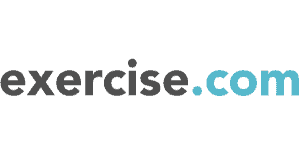
Do you have a passion for helping others?
Have you always dreamed of working for yourself?
The field of personal training may be the one for you. According to the Bureau of Labor Statistics, (1) the employment of fitness trainers and instructors is projected to grow 39 percent between the years 2020 and 2030.
Becoming a personal trainer is a very lucrative and timely opportunity in 2022, considering the projected growth. With the pandemic still in full effect, starting your own personal training business has never been easier. Why? Because many personal trainers and fitness professionals have made the shift to working with their clients completely from home. Classes, training sessions, nutrition advice, and more – can all be conducted over telephone or video conference.
If you love fitness, consider becoming a personal trainer. This career is rewarding and fulfilling. But it also requires a commitment of time and resources to earn a certification and work in the field. In addition to physical training, you should also take business and communication classes as part of your program. You can find personal training programs in your area or online that offer comprehensive and interactive education that includes hands-on experience in a lab environment. You’ll learn the science of the human body, how to build and maintain a successful business and how to motivate clients to reach their health goals. Once you’ve completed your program, you can sit for the personal training exam. The exam is usually administered in a testing center and overseen by a proctor. It consists of a series of questions that assess your knowledge in the areas of fitness and health. Typically, you’ll be asked to answer a set number of questions within a specified time frame. You can prepare for the test by using a study guide or taking practice exams to familiarize yourself with the material. Once you’ve earned your personal training certificate, you can start working with clients. Most trainers work at gyms or health clubs, but you can also get independent contracts with individuals or small businesses. To advance your career, consider taking a degree program to get a bachelor’s or master’s in exercise science or health and fitness management. These degrees will teach you about physiology, anatomy and kinesiology as well as professional ethics and the legal necessities of developing contracts and running a fitness business.
The personal training industry can provide a livable income for most. The great thing about this career path is that it is completely scalable. Your business will grow as much as you are willing to put in the work to market yourself and expand your clientele. According to the National Academy of Sports Medicine, the average salary of personal trainer in the United States is $40,000. Most trainers choose to charge on an hourly basis, so the more clients that you acquire to work with and the more hours that you put into your business, the higher that salary number will become.
| System | Starting Software Costs | Hardware Costs | Key Features |
|---|---|---|---|
| Quote based | Quote based | Ideal for hybrid fitness businesses, in-Person & online gym payment processing | |
Our pick! |
$117/month | Quote based | Will build a responsive website for your gym |
| $149 to $389/month | $0 | Enhanced ease of use, scalability, exceptional customer support and intuitive design |
What Do You Need to Become a Personal Trainer?
If you are interested in becoming a personal trainer, there are three key things that you will need.
#1) Love for fitness and helping others – If you are serious about becoming a personal trainer, make sure you have the right motivation. There is an expectation that you have a passion for fitness and health. Training clients can bring a set of challenges, so it’s important to have a desire to help others accomplish their fitness goals to get you through hurdles in your career encounters. You should focus on what you want and why you want to become a personal trainer. It will help you be successful in your business.
#2) Certification – You will need a certification to become a personal trainer, whether you are working for yourself from home or decide to work at a facility one day. Many employers will require you to have a certified personal trainer certification to be able to work there.
#3) CPR Certificate – Most personal training certification programs will require you to complete a CPR training course and become certified in order to gain your personal training certification.
5 Easy Steps to Become a Personal Trainer
If you have the drive and desire to help others in their own exercise journey and are willing to put in the time and effort to get your CPR and personal training certification – personal training may be the right fit for you. There are 5 easy steps that you can take to get you on your way to success in this field.
A step that isn’t actually required but may help you in your endeavors is to have a business background, especially if you are planning to run your own training business. This isn’t as hard as you might think. You can complete a small business training course, which you can take at a community college. After you’ve graduated from the program, you should join your local Chamber of Commerce or a Meetup group. You can also participate in trade shows or annual expos that are held in your area, which is a great place to network with other industry professionals to your surrounding community. This will help you find potential clients as well.
The first official step in the five step how-to-guide is to get your CPR training and your personal training certificate. You should choose an institution that is accredited by the NCCA, or another reputable source. You must have at least two years of experience in the fitness industry to qualify for a certificate, however most institutions will accept your own fitness journey as adequate experience.
If you want to specialize, The International Sports Sciences Association offers certification in several different areas, including fitness training, strength and conditioning, and senior fitness. The ISSA offers many specialized accreditations and has partnerships with some of the leading health clubs. The cost to become a certified personal trainer is usually about $500.
The second step that is not an obvious choice but will be extremely helpful, particularly if you are brand new to the industry – is to find a mentor. The mentors of the industry can help you gain the knowledge and expertise necessary to become a professional. A mentor will be able to guide you through the ins and outs of the industry, and help you with every step of the process when it comes to establishing yourself as a trainer.
In addition, mentors may be able to send you clients that they are not able to take on. The right mentor will be able to give you advice on many aspects of the career from setting reasonable rates, different client personalities, and more. It will be beneficial to have someone who has walked through the journey you are embarking on and be able to answer any questions that you may have.

Once you have purchased any equipment that is needed, you should start marketing yourself. Create a logo for your business, and consider imprinting it on your own gym apparel to sport around your community. These promotional pieces will identify your business and invite potential clients to approach you. You can also use your logo to set up online profiles on social media platforms to create your online presence.
After you have developed a brand for your business, you can begin attracting new clients. Decide if you want to provide services to everyone, or if you simply want to target a niche audience like senior citizens, runners, body builders, etc. It’s important to develop a great marketing plan so that you’re able to have a strategy in place to acquire clients, whether that is through social media, word of mouth, or attending fitness events. As a fitness trainer, you’ll want to be able to sell your services and clearly communicate to people why they should hire you.
Fourth, you’ll want to complete any legal steps that are required by your state. This will vary depending on where you live. In most cases, you will need to register your business as a limited liability company or some type of official legal entity. Registering as an LLC will ensure that any personal assets that you have are secure in the event that you get sued. This is an important step, as well as investing in a good business insurance plan. Training clients always presents a risk of injury, so it’s crucial to make sure that you are protected in the event that a client gets hurt. If you are planning to host clients in an area out of your home, check with your local government to ensure inquire about any zoning approvals that may be needed.
Fifth and lastly, it’s time to get paid. You’ll need to decide on the rates that you want to charge your clients. Your rates should be based upon your qualifications, experience, as well as how much money that you want to make. You can use some simple math using your desired income to determine where you need to set your rates.
Check out this online personal training income calculator below (2) and you can plug in your own numbers and quickly view some common rate numbers and the income that those rates would bring in.
For example, if you charge only $99 a month for online training and you add seven new clients every month, here’s how much money you’ll make:
- After 12 months: $54,054
- After 24 months: $207,900
- After 36 months: $461,538
Now, let’s run those numbers with you charging more for your online training—something many trainers should do. If you charge $179/month and add seven new clients a month, here’s what your online training alone would bring in:
- After 12 months: $97,734
- After 24 months: $375,900
- After 36 months: $834,498
Keep in mind that growing your business is a marathon not a sprint, and it will take time to grow your business. Make sure to set a rate that is sustainable.
Best Point-of-Sale System for Personal Trainers
After setting your rates, you will want to make sure that you have a method of accepting payments. Using a platform like Venmo or PayPal to accept payments is common, however these types of payment platforms can be difficult to track your income when it comes to tax reporting time. It’s best to invest in a point-of-sale (POS) system to make receiving payments a much easier process. There are a few different point of sale systems on the market that are designed specifically with the fitness industry in mind.
Exercise.com – Most Widely Used in the Industry
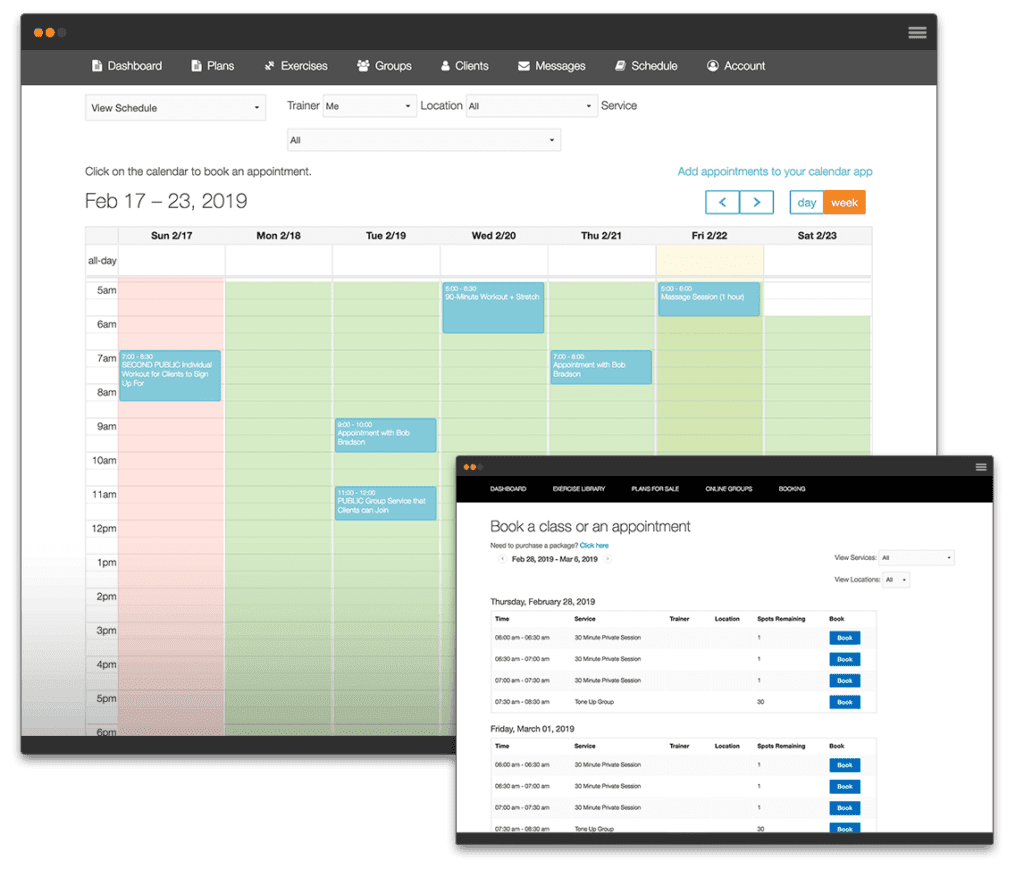
One of the most widely used POS systems in the fitness industry, Exercisecom POS is well-known for its ability to automate and simplify daily operations. This software is a great solution for gyms, personal trainers, and fitness centers to manage their point of sale, customer management, inventory, and payroll tasks. It offers robust security features to protect customer data and a user-friendly interface that is easy to use. Our top recommended POS system to consider is EZ Facility. This POS is a cloud-based system that is designed for PT studios and gyms to streamline business operations, automate processes, keep track of inventory and payments. It also supports multiple languages, a mobile app, and other advanced features. Moreover, it is known to have a great price with many industry specific features that can help you automate your business. Another feature to look for in a POS system is centralized menu management. This means that you can update your menu across all your locations from a single place. This can save you a lot of time and money. The most important thing to consider when choosing a POS is whether it will meet your business’s current and future needs. This includes your business size, the number of employees, and any growth plans you have for the future. It also involves thinking about how the POS will affect your budget, especially when it comes to payment processing fees and hardware costs. Make sure to choose a POS that offers transparent pricing, avoiding hidden fees and hefty contract commitments.
Exercise.com Pros:
-Appointment Scheduling Assistance
-Client Fitness Assessments
-Billing & Invoicing Tools
-App and Website Creation
-Quick Payment Processing
-Attendance Tracking
-Exercise and Nutrition Logger
-eCommerce Capabilities
-Interactive Customer Support Staff
Exercise.com Cons:
-Users Report System Glitches
-Limited Customizations
-Workout Program Builder is Sub-Par
-Platform is Not as User Friendly as Others on the Market
-Users Report Heavy Differences Between Apple and Android User Experience
More about Exercise.com…
The personal training platform from Exercise.com will allow both you and your clients to easily log their workouts, view training history, track their nutrition, and view progress notes. This feature will enhance client-trainer communication and allow you as the trainer to really aid in helping your clients reach their goals in a timely manner. The software uses smart analysis on client performance, tracking key stats like records/PRs, exercise performance, and progress photos.
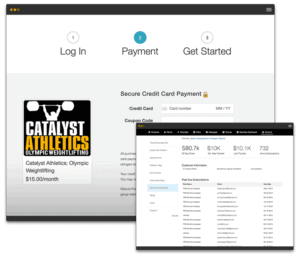
Clients are able to pay you online on a secure payment processing portal offered through your custom branded application. Clients can be set up with automated billing and billing reminders. In addition, clients are able to purchase membership packages through your website or app. It’s a simple process and clients can pay you in just a few clicks.
Exercise.com runs on a quote-based pricing model, but there are various pricing plans available based on your needs. Typically, trainers with 25 clients or less can expect to pay around $125/month.
ZenPlanner – The Most Customizable Option
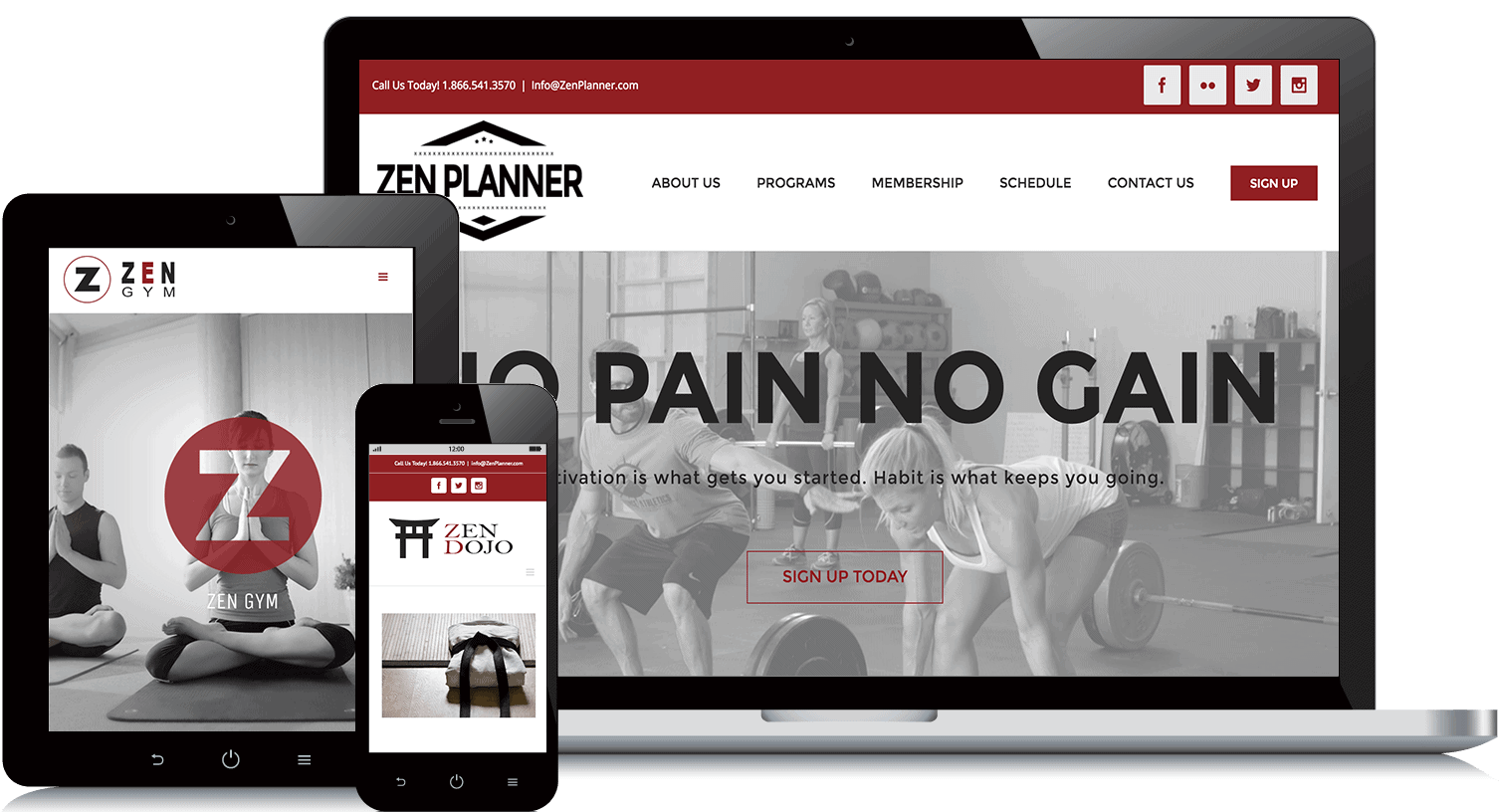
ZenPlanner is another great option to utilize as a personal trainer. ZenPlanner offers the best management software solution for those in the fitness industry. What sets ZenPlanner apart from other platforms on the market is the attention to detail when it comes to customer relationship management.
ZenPlanner Pros:
-Customizable Automations
-Mobile App for Clients
-Integrated Marketing Tools
-Simplified Scheduling
-Workout Tracking and Reporting
-Easy-to-Use Website Builder Templates
-Straight Forward Pricing
ZenPlanner Cons:
-Android App is Not as Extensive as Apple App
-Users Report the Application Can Be Buggy and Crash
-Customer Service is Lacking
-Steep Learning Curve for Trainers and Clients
More about ZenPlanner…
A great aspect of ZenPlanner is their pricing model. Their platform offers very transparent pricing. A personal trainer with 50 clients or less will pay $117/month to use their system. There aren’t any start up fees or long-term contracts, which is a nice bonus if you decide that you don’t like the platform and would like to switch.

The customer support staff at ZenPlanner will assist you in any questions that you have during website creation or any issues that arise. This is a really nice feature for trainers who are working or operating their business from home, so clients can interact with you directly on your website. Having a clean online website for potential clients to be able to find you and book your services is important.
A fun feature that is exclusive to ZenPlanner POS software is that you are able to program workouts directly onto the software and then share them onto your website or social media. Your clients can access the workouts from their mobile app. In addition, you can let your clients interact with each other through a client leaderboard. This will allow your clients to log their workouts, and “like”, “comment”, or cheer other clients on as they log their progress. It’s a fun way to stay accountable with others on their journey as well as have some friendly competition.
Receiving payment is fairly simply through the ZenPlanner dashboard. You can set clients up on an automated draft schedule. If you’re in person, you can simply use the Credit Card Capture tool and take a picture of your client’s card. Or, clients can use their member app and the self-service portal to pay you directly online.
Mindbody – Marketing Focused
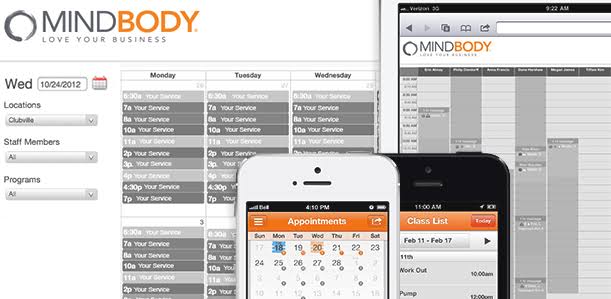
Mindbody Pros:
-Built-In Marketing Capabilities
-Reliable 24/7 Customer Support Access
-Alerts and Notifications for Clients
-Real-Tiem Scheduling Alterations
-Integrated Artificial Intelligence Tools (Available with More Costly Pricing Packages)
-Robust Reporting Capabilities
-Transparent Pricing Pacakages
MindBody Cons:
-Full Feature Set Can Be Expensive
-Steep Learning Curve
-Software Can Be Buggy
More about Mindbody…
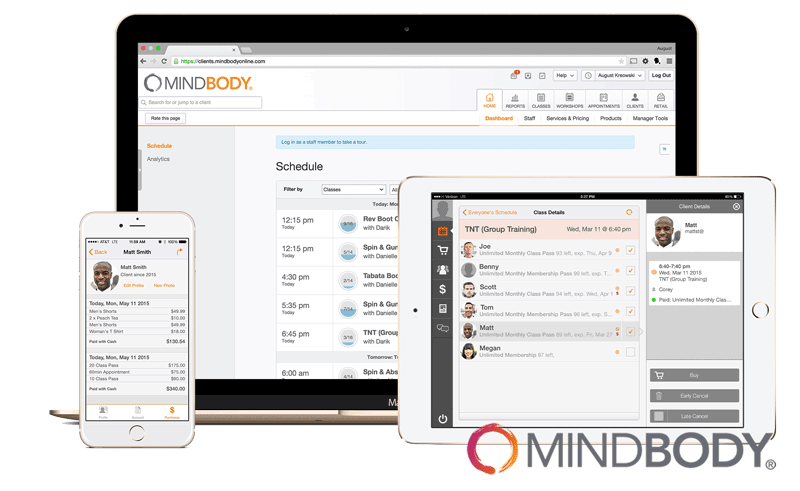
One way that Mindbody will assist in growing your client base is through their finder tool on their website. Consumers are able to go onto Mindbody’s website and search for fitness instructors close to them. When you use Mindbody, you can make your profile visible on their finder tool so that potential clients in your area are able to easily find you online.
Mindbody’s platform works to automate tasks for you so that you are able to focus more on training. Mindbody will automatically send text and email confirmations for appointments to your clients through the Mindbody mobile app. You can also set up automatic spot refills. If a client wants to train at a certain time slot, they can choose to be put on a waitlist. If someone cancels for their spot, Mindbody will let them be added to that spot automatically.
The point-of-sale functionality within Mindbody has a user-friendly interface. It’s easy to accept payments, as you can create client profiles. Within the client profile, clients can save their preferred payment method and make secure payments within the platform.
Get Started: Build Muscle and Business!
Becoming a personal trainer can be a very rewarding career choice. As you grow your personal training business, finding the right point-of-sale solution is very important.
You will need a system that helps you with scheduling, management of your client base, website and app creation, as well as point-of-sale capabilities. While investing in a point-of-sale solution may seem like a daunting and expensive leap at first, your business will experience a strong return in the long run.
- Bureau of Labor Statistics (2021)
- Exercise.com (2022)

